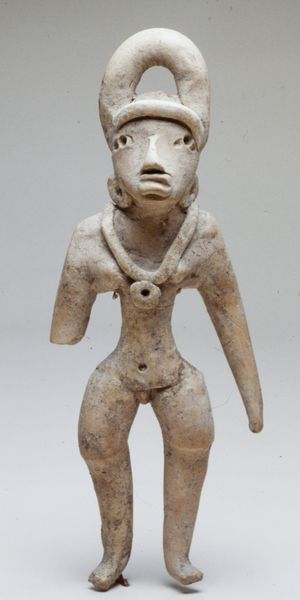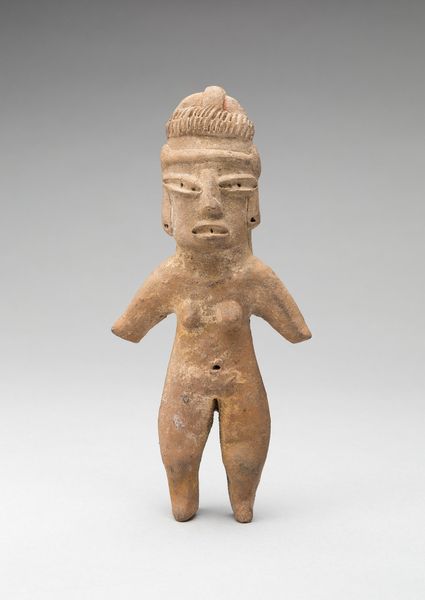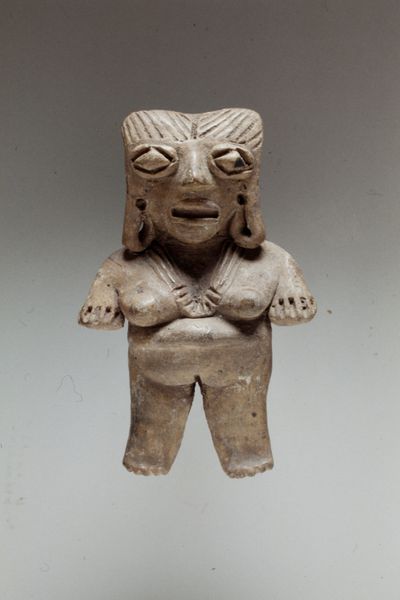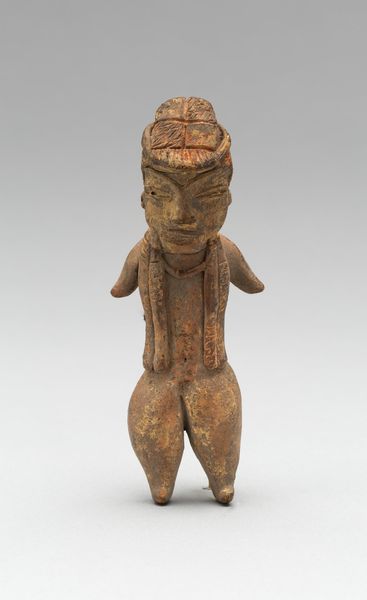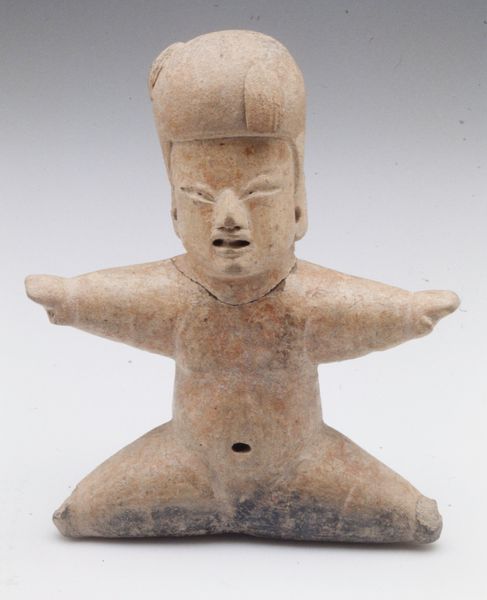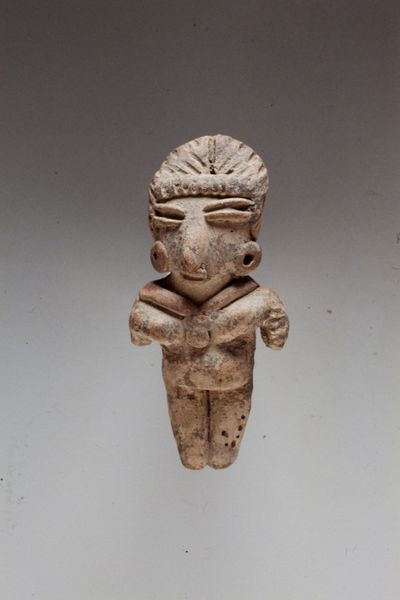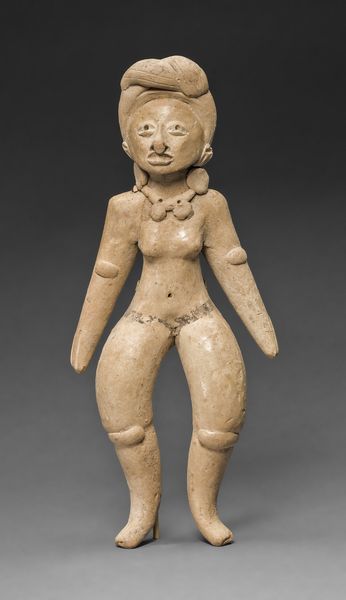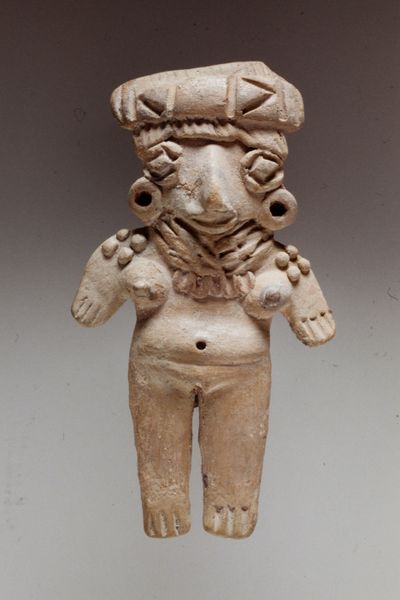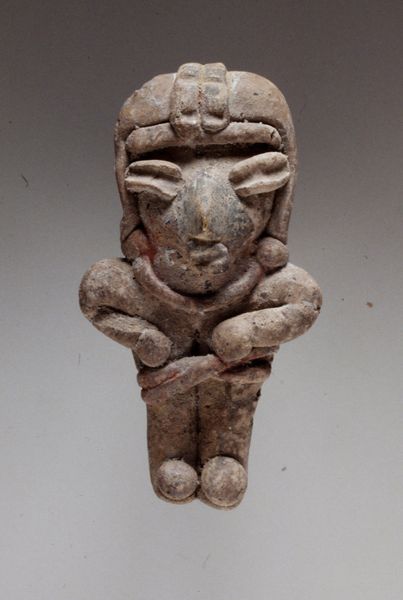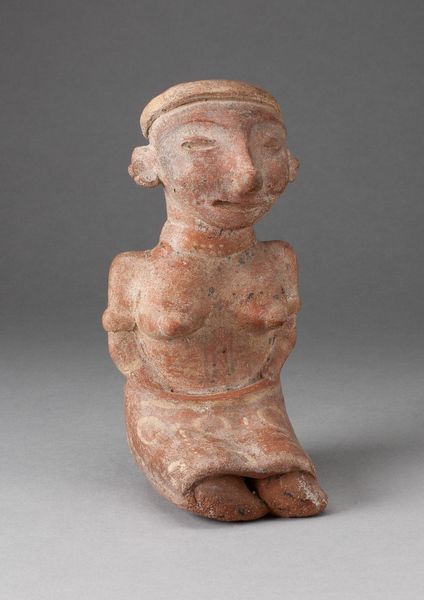
ceramic, sculpture, terracotta
#
ceramic
#
figuration
#
sculpture
#
terracotta
#
indigenous-americas
Copyright: Public Domain
Curator: Ah, this ancient piece from the Huastec people. The Minneapolis Institute of Art holds this ceramic sculpture rather simply titled, "Figure", which dates back to somewhere between 400 and 799. Editor: Immediately, I'm struck by its almost unsettling stillness. There's a quiet dignity about it, but the figure’s somewhat blank expression and the simple modelling evoke a kind of haunting presence. Does that resonate? Curator: It does. Knowing that this piece likely served a ritualistic purpose shifts my understanding of that perceived stillness. It's a poised readiness. The headdress, that slightly awkward tower, and the adornments speak to a carefully constructed identity. Editor: Precisely. That adornment – the necklace, particularly – acts as a marker. Think about the visual language here: the pronounced, albeit simple, necklace combined with the stark nudity. This could be signaling something crucial about social standing, ritual role, perhaps even resistance. The positioning, though stiff to our modern eye, maybe holds an entire language we’re missing. Curator: Absolutely, and the material itself--ceramic--it feels elemental, literally grounded in the earth. There’s a beautiful rawness, a fragility that belies its age. You almost expect it to crumble at the slightest touch, but it persists. Editor: That tension between fragility and persistence feels profoundly human. Consider the period—what were the gendered power dynamics at play in Huastec society? Was this figure meant to embody a particular female ideal, or was it something more subversive, even defiant? Its nakedness isn't necessarily vulnerability, but potentially, and radically, the assertion of being, an unashamed self-representation. Curator: The sculpture encourages questions that stretch across time, prompting reflections on how identities and meanings were created and lived centuries ago, and how we project our present understandings onto these traces of the past. Editor: In short, a modest but quietly powerful work that demands a deeper conversation, not just about art history, but about being human across time and culture. It seems very timely, considering the modern resurgence of Indigenous voices, for this art piece to call for acknowledgement and reckoning.
Comments
No comments
Be the first to comment and join the conversation on the ultimate creative platform.
